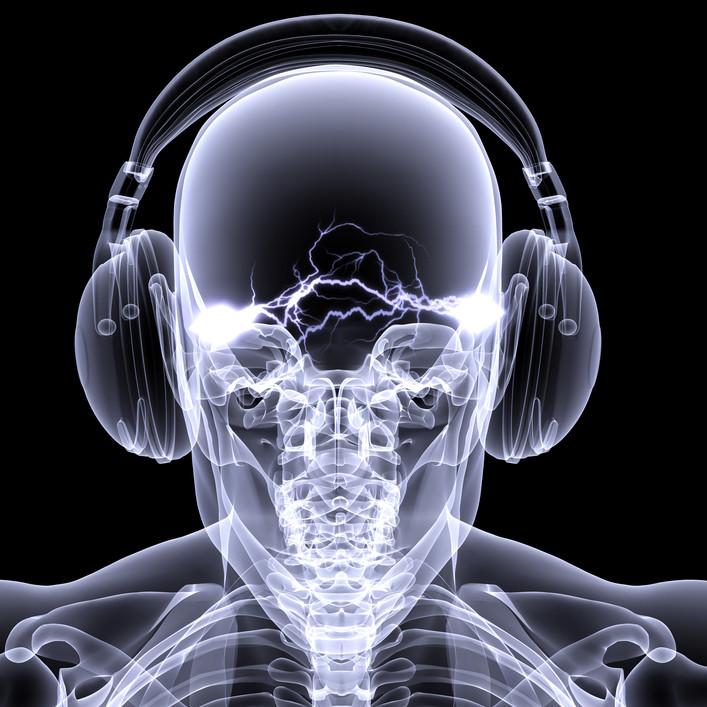Binaural Beats to Boost Your Brain Performance


Bill Gates, Steve Jobs, Oprah. Michael Jordan, LeBron James and Derek Jeter.
All spectacularly successful. All highly accomplished, and all capable of achieving profound states of flow that lead to ground-breaking progressions in their fields.
So what is it that sets these high flyers apart?
What makes them so capable of that level of achievement?
Well, some studies would argue that high achievers are more capable of achieving whole brain functioning, either through meditation, or brainwave entrainment. In a nutshell, the brain waves in their left and right brain hemispheres fall into a pattern with periodic stimulus. This is based on the principle of entrainment in physics, in which two or more rhythmic cycles will synchronize over time. In high performers, it seems that these patterns sync up more frequently than they do for the rest of us.
Maybe that stimulus is exposure to a moving light, sound like binaural beats or drumming, or something tactile like a vibration - whatever the stimulus, it focuses your mind and clears away distractions. The periodic nature of the stimulus creates what's referred to as the flicker response (for the calming sense that watching a flickering fire or candle can cause).
Known as hemispheric synchronization, the brain state this process creates is associated with deeper levels of calm and focus, and is the elusive zone pursued by meditation practitioners around the world.
Why It’s Easier than Meditation:
Unlike traditional meditation, which can take years to become an ingrained, effective habit, brainwave entrainment can start taking effect from your first session.
Meditation centers around clearing your mind, quieting distractions and stray thoughts, and focusing on a single mantra or idea. It sounds simple enough… but you’re probably familiar with the fidgety, frustrated feeling that washes over you when you realize your mind has wandered again (for the fifteenth time, since you sat down three minutes ago).
Entrainment shortcuts this time-consuming, often challenging process, and is associated with the same benefits of meditation, including:
- Reduced anxiety and stress
- Better focus and mental clarity
- Better immunity
- Reduced incidence of chronic illness and injury
- Better proprioception
- Deeper sense of satisfaction and peace
A range of simple techniques can enable your brain to drop into that synchronized, meditative wave pattern in just a few minutes.
[Tweet "Binaural beats can create the same effects as #meditation in less time"]
Your brain experiences four main types of electrical waves. These are Beta, Alpha, Theta and Delta waves. Each type of wave is responsible for a different level of awareness and mental function.
Most of us spend most of our time experiencing Beta brain waves.
These happen at a frequency of 14-30 Hz, and create a waking state of the normal, alert consciousness.
Alpha waves, occurring at 9-13 Hz, is the state you experience when your mind and body are winding down for the day. You’re awake, but relaxed and maybe a little drowsy.
Theta waves set in at 4-8 Hz, and are the most variable waves. You can be sleeping lightly and dreaming with Theta waves, or awake while in deep meditation or experiencing reduced awareness. A Theta state increases creativity and your capacity for problem solving, as your subconscious mind is more active and accessible.
Finally, Delta waves take over at 4 Hz or below. At this point, you’re usually in deep, dreamless sleep and have no awareness of your body.
It’s the Theta waves that you want to create, and this is where tools like binaural beats, monaural beats, and photic driving, come into play.
What are Binaural Beats?
The human ear can hear a very wide spectrum of sound - from around 20 Hz up to 20,000 Hz. This means that brain waves generally occur below the point that we can hear. Which of course begs the question - how do you get your brain to sync with something you can’t hear?
Binaural beats are audio tracks featuring two tones. These tones are set at slightly different frequencies, causing your brain to process both frequencies, and essentially fill in the gap. Just a few Hz difference is enough to cause your left and right brain waves to sync up:
Choosing binaural beats that have frequency differences of between 4 and 8 Hz can allow you to drop in Theta states very quickly. By repeatedly exposing your brain to hemispheric synchronization like this, you train your mind to slip easily into that creative, solution-focused flow state that allows you to perform at a higher level.
Binaural beats are just one method of brainwave entrainment. Any rhythmic audio or visual stimulus can lead you to that meditative state - whether it’s a drum beat, a flickering light, or simple music. Most binaural beats use soothing sounds, like flowing water, bells or quiet music, as a vehicle to deliver the alternating frequencies to your brain.
There are a huge variety of binaural beats available online, and getting started is as simple as grabbing your headphones and picking a track. [Don’t do this while you’re driving, or doing anything else that requires your full and active attention, but put aside a few minutes each day when you can just sit quietly and listen.]
After each session, and as time goes on, this can lead to greater productivity and output, more focused and clear thought patterns, improved creativity, reduced stress, and greater overall performance.
Have you tried using binaural beats? Leave us a comment to tell us about your experience! And if you want to improve your performance even more, make sure you check out the Optimal Mental Performance Stack today.











